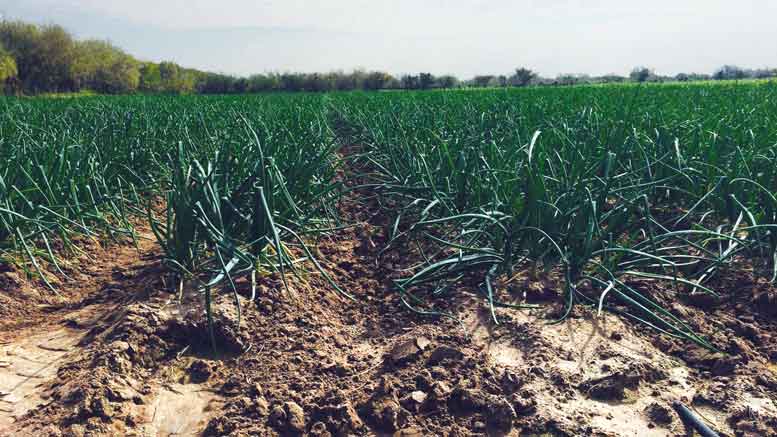|
Click to listen to this article
|
By Dante Galeazzi, Executive Manager, South Texas Onion Committee

Despite an uncharacteristic December freeze, the warmer-than-average fall and winter have put Texas onions on a trajectory to be ready ahead of the typical St. Patrick’s Day kickoff.
Many farmers in the subtropical Rio Grande Valley are looking at great stands of onion fields in late January that will likely be ready weeks ahead of their typical start. The 80-degree days from most of December and January have played a big role in giving those onions the heat units needed. Plus, the occasional rainstorms the region has experienced since September have all contributed to the positive and healthy growth of this year’s crop.
The season in South Texas typically sees plantings begin in August and September and go through early January, with harvest running from late February into late June and peak shipping volume occurring in April and May.
Acreage for this year is up considerably in South Texas – both in the Rio Grande Valley and Uvalde-Wintergarden growing regions. Many in the industry expected the increase in plantings after strong sales throughout the 2022 year – not just the Texas 2022 season. And the increase can be seen in all colors.
For those unfamiliar with the Texas fresh onion industry, growers focus primarily on the Texas 1015 Sweet Onion as their premium product. These varieties are short-day sweet onions that are commonly grown for sizes in the large-mediums and jumbos, as they make a great retail grocery store item, which can be promoted as the “first U.S.-grown fresh onion of the season” and as the “granddaddy of all sweet onions.”
Reds, whites and yellows are grown in the region to complement the sweet onion crop. A vast majority is conventionally grown, although there is some regular organic production by several growers who have found success in their production models. The pest and disease pressures associated with the conditions in South Texas have prevented many from entering or expanding their organic onion crops.
Opportunities
Due to the high water content of the onion varieties used in Texas, mechanical harvesting is not being used throughout the region, which has left growers challenged to find sufficient harvesters, similar to many fresh produce growers throughout the country. Varieties which are conducive to mechanized harvest, retain the traditional flavor and size traits, and work with the conditions in South Texas will be needed to support the research being done on machinery adaptions.
The growers in South Texas are always looking to capture a longer window of opportunity, primary on the front of the season in February. Going later brings competition from multiple regions such as Georgia, New Mexico and California. But in January and February, there are few options for non-storage onions. Production systems and seeds which would support a late January harvest with a mid-February start for shipping could expand the season for Texas growers by a full month and create an opportunity that gives the growers market access four to six weeks ahead of the next region.

